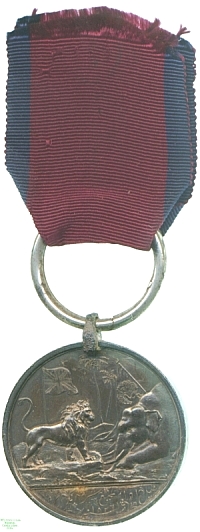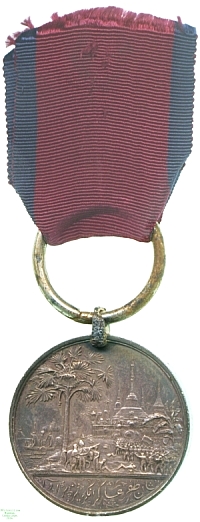Burma War Medal, 1832 (First Anglo-Burmese War), silver
In 1824 raiding by Burmese troops of King Bagyidaw of Ava, in modern-day Myanmar, into the border states of Sylhat and Cachar (now both in India) caused their independent rulers to appeal for help from the British in India. This led to an orchestrated reprisal expedition whose aim was to take Rangoon. The campaign lasted through two years of extremely difficult fighting, but in 1826, with his forces driven from Assam, Rakhine and Manipur, King Bagyidaw agreed a treaty with the British. He was to abdicate in 1837.
This medal was awarded by the British East India Company to the Indian troops involved in what was called the "war in Ava"; Europeans and naval and marine forces were awarded a bar to the Army of India Medal in 1851.
This silver issue of the medal was awarded to Indian troops from Bengal and Madras in 1832; officers received a gold version. It is unnamed, so the soldier who received it cannot be identified. Lester Watson purchased the medal from the London dealer Spink at some point before 1928.

